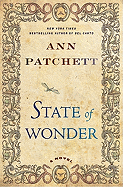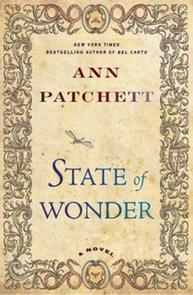
 Two women form the nucleus of
this story: Dr. Annick Swenson and Dr. Marina Singh. They could not be more
different--at first glance. Dr. Singh was Dr. Swenson's student in medical
school, which Dr. Singh left for a career in pharmacology. She has settled in
to a life of research at Vogel, a pharmaceutical company in Minnesota, enjoying
a discreet relationship with Mr. Fox, her older boss, and a friendship with
Anders Eckman, her colleague.
Two women form the nucleus of
this story: Dr. Annick Swenson and Dr. Marina Singh. They could not be more
different--at first glance. Dr. Singh was Dr. Swenson's student in medical
school, which Dr. Singh left for a career in pharmacology. She has settled in
to a life of research at Vogel, a pharmaceutical company in Minnesota, enjoying
a discreet relationship with Mr. Fox, her older boss, and a friendship with
Anders Eckman, her colleague.
Anders is sent to the Brazilian jungle, somewhere near Manaus, to check up on Dr. Swenson, the eminence grise who has been there for years, working for Vogel, and bodes to be there for many more. She feels no urge to make timely reports about how Vogel's money is being spent or about how her research is progressing. She just wants to continue studying, unmolested and undistracted, the effects of the bark of a certain tree which, when chewed regularly, gives women the possibility of conceiving indefinitely. Dr. Swenson is 73 and pregnant. What she knows and Vogel doesn't is that this same bark renders women immune to malaria. That would be the real breakthrough. It might be argued that not all women 70-plus are interested in pregnancy, labor, delivery and child-rearing. This bark, once tested and made into a drug, might be the panacea needed to fight malaria--at least among women.
Suddenly, word reaches the company that Anders is dead of fever. Nothing else; no remains, no personal effects shipped home, no real information. His wife, Karen, wants something definitive to tell their three boys. She reaches out to Marina, asking her to go to the research site and find answers. Mr. Fox concurs, and Marina is on her way, filled with misgivings. Her quiet life among the test tubes is on indefinite hiatus.
Patchett's evocation of Manaus and its environs will have the reader dripping sweat and slapping at hard-shelled bugs, biting ants and crawling things with no known names. There is one respite: a trip to Teatro Amazonas, that incongruous relic of the rubber boom. (Isn't that on everyone's bucket list?) After a sojourn in Manaus where she is prevented from going further by a young couple--Dr. Swenson's dragons at the gate--Marina is approved and finally starts down the Rio Negro and on to the real purpose of her trip.
Patchett makes the jungle jump off the page, with all its smells, sounds, rot, green beauty, teeming life--most of it threatening-- and we wonder, along with Marina, why on earth she agreed to this odyssey. The answer is that Mr. Fox and Karen needed her to go, she greatly admired Anders and she is dead curious to see Dr. Swenson again. Will she still evoke the admiration, fear, desire to emulate that she once did? The answer is "yes" on all counts.
What Marina finds there is more than she bargained for, but she is equal to it. She is able to put to rest demons from her past, and gain confidence and a steady moral compass that enables her to make the nearly impossible decision she is confronted with.
This is Patchett's best effort since The Patron Saint of Liars and, yes, that includes Bel Canto, which worked beautifully until she quit the story at the end instead of finishing it.--Valerie Ryan
Shelf Talker: A journey to the jungles of Brazil to learn what happened to a co-worker brings Dr. Marina Singh into contact with an anaconda, cannibals, creatures that bite and sting and, most frightening of all, her former teacher and mentor.

